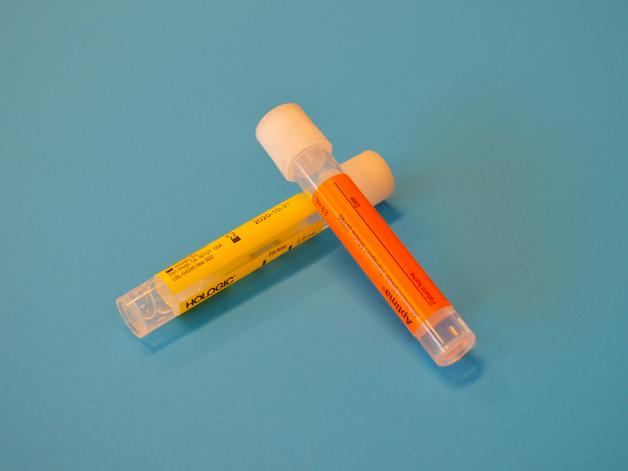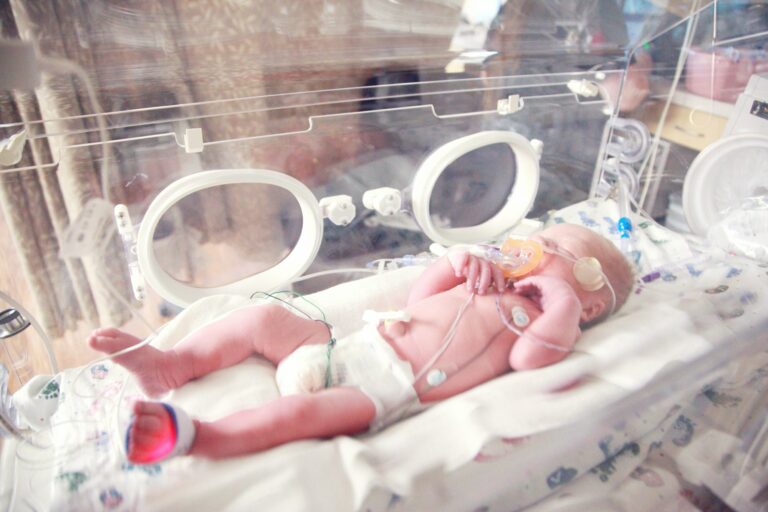Imagine feeling a sudden itch or discomfort right when you least expect it—just when pregnancy already brings a whirlwind of changes, both physical and emotional. Many parents-to-be, confronted by unfamiliar symptoms in such a delicate phase, begin to wonder: Yeast infection during pregnancy, is it a genuine concern? Questions pile up: Can it harm the baby? Why does it feel so persistent? What is safe for relief? Each worry feels valid, and uncertainty can quickly become overwhelming. Here, solutions emerge—grounded in medical science and practical experience. Explore why yeast infection during pregnancy is so common, how symptoms reveal themselves, why a precise diagnosis matters, and which treatments or daily habits foster both comfort and confidence.
Understanding Yeast Infection During Pregnancy: The Medical Backdrop
A yeast infection during pregnancy—technically called vaginal candidiasis—becomes surprisingly frequent as hormones reshape the body’s inner workings. But why is pregnancy such fertile ground for Candida albicans, that usually harmless fungus?
When estrogen and progesterone rise, the vaginal lining gathers more glycogen (a type of sugar). This sugary layer is practically a feast for Candida. An imbalance soon appears between the protective lactobacillus bacteria and the opportunistic yeast. Add in the damp, warm environment and sometimes a weakened local immune response, and conditions become ideal for overgrowth. Suddenly, that modest population of yeast turns disruptive, causing irritation, itching, and all-too-evident symptoms.
Why Yeast Infection During Pregnancy Is So Common
Pause for a moment—did you know the simple act of being pregnant transforms your body’s microbiological environment? These changes don’t happen in isolation—they ripple through all systems. Among the main reasons for a yeast infection during pregnancy are:
- Significant increases in estrogen, making more glycogen available to the vaginal flora.
- Decreased protective lactobacillus, which usually slows yeast growth.
- Altered vaginal pH, giving yeast an open door to multiply.
- Immune adaptation—a unique aspect of pregnancy—reducing certain local defenses.
Compounding factors also sneak in:
- Antibiotic use, killing helpful bacteria.
- Over-zealous washing or perfumed hygiene products, disrupting the microbiota.
- Tight-fitting or synthetic clothing, trapping moisture and heat.
- Diabetes or high sugar diets, increasing available glucose for yeast.
Yeast infection during pregnancy is extensive but, thankfully, typically manageable with targeted solutions.
Symptoms: Spotting the Signs Early
Clarity is power. How does a yeast infection during pregnancy announce itself? Symptoms often arrive in a rush or grow day by day, quickly infringing on comfort and intimacy. Classic signs include:
- Vaginal itching and irritation, sometimes near impossible to ignore.
- Redness and swelling around the vulva.
- Burning sensation during urination or intercourse.
- Unusual, thick, white vaginal discharge—often compared to cottage cheese, but notably odorless.
- Sores or tiny fissures, in more severe cases.
What about other infections? Unlike bacterial vaginosis or sexually transmitted diseases, yeast infection during pregnancy does not cause green, yellow, or foul-smelling discharge. When in doubt, a healthcare provider can differentiate between causes—and reassurance is only a call away.
Diagnosing Yeast Infection During Pregnancy: Why Accuracy Matters
Facing these symptoms, it’s tempting to opt for over-the-counter relief. But here, caution pays off. Medical diagnosis involves:
- Physical examination by a gynaecologist or midwife.
- Microscopic analysis of a vaginal swab, seeking Candida under the lens.
- Vaginal pH testing—a simple but effective way to narrow down the infection type.
Why not skip to treatment? Because some antifungals, especially oral forms like fluconazole tablets, may carry risks during pregnancy—hence guidance is paramount. With correct diagnosis, the path to prompt relief is clear, and unnecessary worries about the baby’s wellbeing can often be set aside.
Safe Treatments During Pregnancy: What Works (and What Doesn’t)
When it comes to treating a yeast infection during pregnancy, local antifungal therapy stands above the rest:
- Topical antifungal creams or vaginal suppositories, typically clotrimazole or miconazole, are the safest and most effective.
- Recommended treatment duration: 3–7 days, depending on severity.
- Completing the full course is vital—even if relief arrives early. Stopping short means the infection may return, stronger than before.
Oral antifungals, such as fluconazole, should generally be avoided—evidence links them to rare adverse pregnancy outcomes. Essential oils, herbal mixtures, and other unproven home remedies, despite alluring testimonials, lack both evidence and safety data for use during pregnancy. Always centre decisions around medically approved methods, adjusting based on professional advice.
Should partners also be treated? Sometimes, yes—especially if infections repeat. Preventing reinfection strengthens comfort and peace of mind for both parents.
Everyday Care: Prevention and Comfort
A few straightforward, science-backed habits can keep recurrence at bay:
- Opt for cotton underwear—let sensitive skin breathe.
- Change out of wet clothes promptly.
- Wash intimate areas only with gentle, pH-balanced cleansers—never use scented products or douche.
- After washing, gently pat dry—moisture is yeast’s ally.
- Limit sugar intake; yeast loves glucose-rich environments.
- Consider probiotics, but only after discussing with your healthcare provider.
Good hygiene habits lower the odds of a yeast infection during pregnancy. But remember, “clean” does not mean aggressive cleansing—restoring balance, not eradicating all microbes, is the real secret.
Frequency: How Often Does It Happen?
Statistics bring clarity—20% to 40% of pregnant women will, at some point, deal with a yeast infection during pregnancy. Likelihood soars during the second and third trimesters, matching the peaks in hormonal fluctuation. Some find they experience more than one episode, especially when other risk factors—such as diabetes, past infections, or frequent antibiotics—are present.
Complications: What Should Parents Watch For?
Though rarely alarming, yeast infection during pregnancy can have ripple effects:
- Irritation and persistent itching sometimes lead to small skin breaks, increasing chances of secondary bacterial infection.
- During vaginal birth, exposure might mean the newborn develops oral thrush (white spots inside the mouth) or a diaper rash—both benign and treatable with speed.
- A very small risk of preterm contractions exists if infection triggers marked inflammation, but for the vast majority, yeast infection during pregnancy remains a manageable discomfort rather than a threat.
Raise the flag to your healthcare team if symptoms worsen, recur frequently, or complicate daily life.
Preventing Recurrence: Building Daily Defenses
Stepping up preventive measures yields long-term comfort. Key strategies:
- Embrace loose, breathable clothing; tight synthetic fabrics trap heat and moisture.
- Substitute showers for baths to minimize dampness in intimate areas.
- Never delay changing after exercise or swimming.
- Maintain balanced nutrition, reducing refined sugar and ultra-processed foods.
- Drink water regularly—keeping vaginal secretions healthy and less concentrated.
- After antibiotics, a short course of probiotics (always with medical guidance) may help.
Every small shift—whether in clothing, diet, or hygiene—compounds the resilience of the vaginal ecosystem, reducing both stress and physical discomfort.
Recurrence: Breaking the Cycle
What if the yeast infection during pregnancy seems to come back again…and again? Take heart—this is a familiar pattern. Hormones, incomplete treatments, over-cleaning, diets rich in glucose, and even untreated partners can all play a part. Long-term solutions may involve:
- Ongoing, moderate hygiene (never too aggressive or too infrequent).
- Dietary adjustments to starve the yeast.
- Consistent adherence to treatment protocols, without shortcuts.
- Occasionally, partner treatment to stem cross-infection.
Where recurrences persist, doctors might recommend maintenance therapy or probe for underlying factors like blood sugar issues or hormonal imbalances.
After Delivery: Postpartum and Breastfeeding Realities
Once the baby arrives, hormonal steadiness often brings relief from yeast infection during pregnancy. For some, vulnerability lingers—especially if the same risk factors persist.
A new twist enters during breastfeeding: yeasts can cause nipple thrush, visible as redness, pain, or burning, sometimes passed between mother and baby. Here, both mother and baby need attention:
- Topical antifungal creams for mothers, like clotrimazole, safely used under guidance.
- Babies receive mouth-friendly antifungal drops, usually nystatin.
- Hygiene remains paramount—frequent pad changes, clean and dry nipples.
Any new, persistent nipple pain or oral symptoms in the baby? Timely medical input stops the cycle in its tracks, ensuring comfort for both parent and child.
When Is It Time to Consult Your Provider?
Certain situations deserve prompt professional input:
- Persistent or severe symptoms—intense itching, burning, swelling, or unusual discharge.
- Failure of over-the-counter therapies, or symptom worsening.
- Frequent recurrence raising the possibility of underlying issues.
- Any uncertainty about diagnosis.
The value of an expert’s reassurance, and tailored guidance, cannot be overstated.
Key Takeaways
- Hormonal shifts make yeast infection during pregnancy surprisingly common, especially mid-to-late term.
- Classic hallmarks: intense itching, redness, and thick white discharge—but few dangers for the unborn child.
- Medical diagnosis ensures the correct and safe remedy—local antifungals, not oral medications, are usually first choice.
- Simple changes in daily routines and hygiene cut risk and promote well-being.
- Complications are minor for most, but proactive consultation is key when things feel out of the ordinary.
- For extra guidance, parental support, and health tracking, download the Heloa app and access free personalized health tips and questionnaires for your child.
Questions Parents Ask
Can a yeast infection during pregnancy affect my baby before birth?
Most of the time, the answer reassures: the infection stays localised in the vaginal area. The baby, safely cushioned inside the uterus, is rarely affected. Main concerns arise only at birth—a mild, treatable oral thrush or diaper rash, both easily managed. Still, medical advice is always recommended if you notice any unusual symptoms.
Is it safe to use over-the-counter antifungal creams while pregnant?
It is common to lean towards the pharmacy shelf for quick fixes. Many topical antifungal options—such as miconazole or clotrimazole—are generally considered safe throughout pregnancy. However, checking with your gynaecologist or doctor ensures diagnosis accuracy and avoids unnecessary risks.
When should a doctor be consulted for yeast infection during pregnancy?
Whenever symptoms begin disturbing your routine—persistent discomfort, burning, or discharge changes—it’s wise to seek medical advice. If symptoms do not improve with treatment or become unusual in colour or smell, reach out for professional input. The well-being of both parent and baby always comes first.
Does a yeast infection during pregnancy increase the risk of miscarriage or preterm labour?
For the vast majority, yeast infection during pregnancy does not cause miscarriage or serious preterm labour. Only in rare cases, where infection causes widespread inflammation, does the risk increase. Consistent medical follow-up minimises even rare complications.
Can dietary changes really prevent recurrence?
Evidence supports the role of a balanced, low-sugar diet. High glucose creates a favourable environment for Candida. Combining nutrition changes with daily preventive habits offers the best chance of avoiding repeated episodes.
Are probiotics beneficial for preventing yeast infections in pregnancy?
Probiotics may help restore a healthy bacterial balance but should only be used after discussion with a healthcare provider. Strains and dosages matter—self-medicating is best avoided.
Is a yeast infection during pregnancy contagious? Should my partner be treated?
Usually, yeast infection during pregnancy is not classified as a sexually transmitted disease, but recurrent cases may justify treating partners. Addressing both partners may decrease the risk of ongoing discomfort.
What about natural or home remedies?
While tempting, most lack safety data for pregnancy. Essential oils or herbal treatments have unknown risks and may not be effective. Only medically studied, approved solutions are truly recommended, especially when protecting both parent and baby is the goal.









